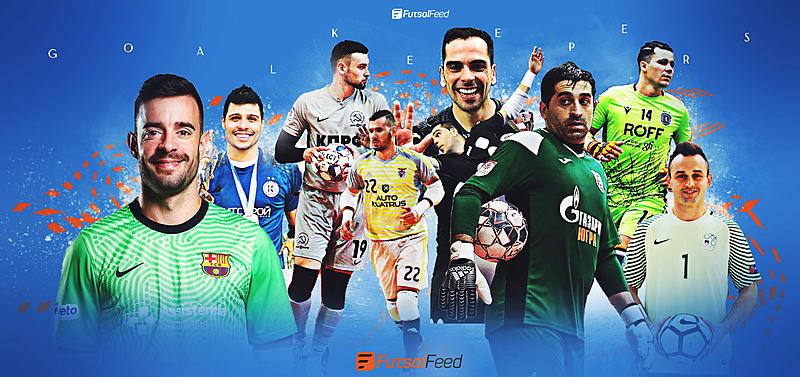Analysis Introduction
Three Croatian futsal coaches have decided this Spring/Summer to take on a demanding and so far unseen project in futsal – an all-inclusive statistical analysis related to goal scoring. The project includes a detailed analysis of how exactly were goals scored with additional analysis of the goals scored from set-pieces, including the „flying goalkeeper“ situations. The project also analyzed scored goals regarding match halves, as well as those regarding the zonal distance from the opponent's goal. In addition, a detailed analysis concerning the average goals scored per match was also done.
In total, 176 matches played in the playoffs of 8 some of the best European leagues were analyzed, with an 8-team playoff format being the common ground for every analyzed league. These leagues are Spain, Russia, Portugal, Italy, Ukraine, Croatia, Slovenia, Czech Republic + UEFA Futsal Champions League from Round of 16.
The leader of this project was Mirko Vrcan (41), current Head Coach of MNK Hajduk Split, who in his career was at the helm of several Croatian futsal clubs such as MNK Murter and HMNK Vrgorac for four seasons in the Croatian First Division (1.HMNL) with whom he won two second places and one third place in the top flight of Croatian futsal.
His associates on this project were Antun Bačić (30), current Head Coach of FC Split, and Assistant Coach of Croatian U19 National Team. Bačić is a coach with three years of experience as a coach in the 1.HMNL, where he took MNK Square Dubrovnik to the league and cup semifinals, as well as MNK Ombla where he took his first coaching steps in his role of player and coach.
Another associate on this project was Ivan Zorica (34), current Head Coach of MNK Murter who was recently in charge of youth sections of MNK Crnica Šibenik (two national semifinals) and who was an Assistant Coach in MNK Crnica (1.HMNL) and MNK Murter.
Analysis Of How Goals Are Scored In Futsal
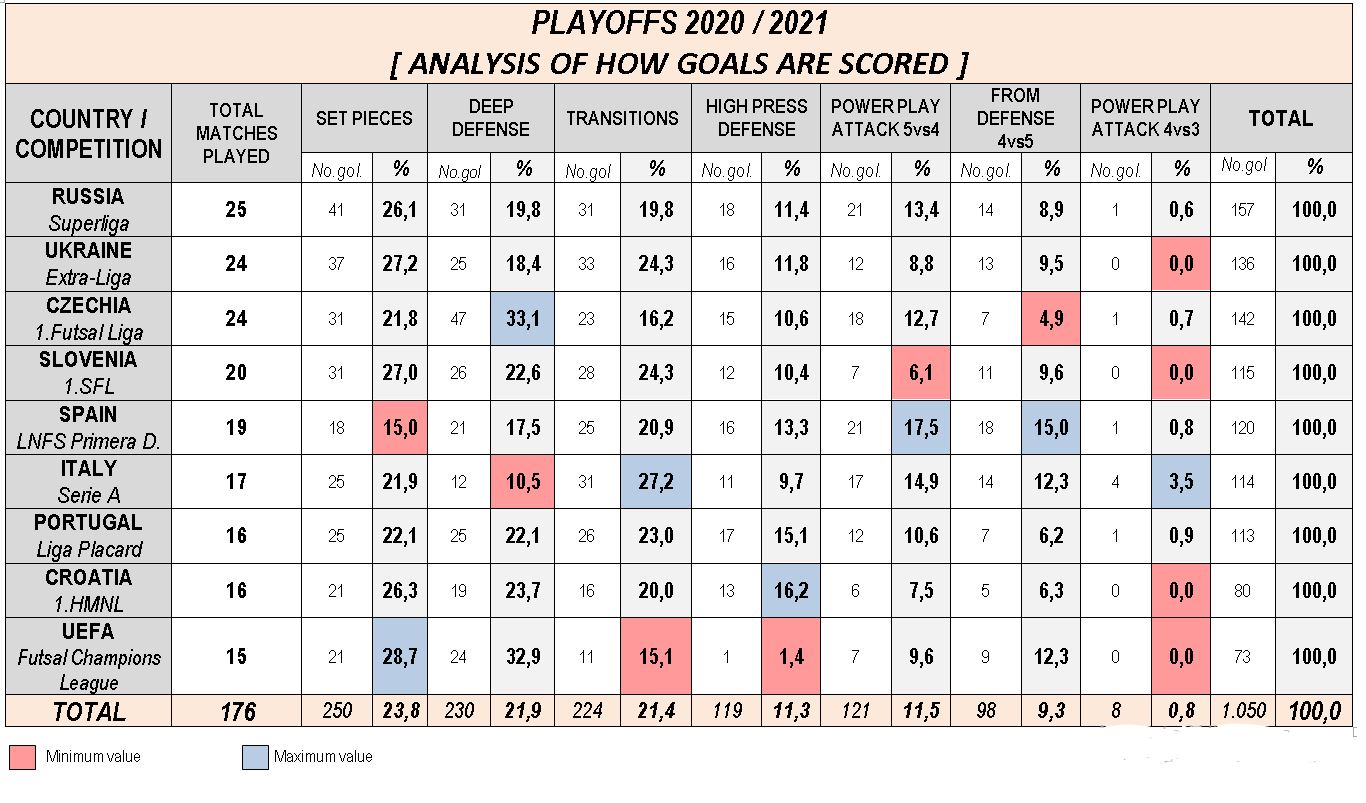
Table 1: Analysis of how goals are scored
TERMS – DEFINITIONS:
SET PIECES – includes corners, kick-ins, free kicks, and penalty kicks from 6 and 10 meters.
TRANSITIONS – all situations of ball repossession in the match including situations with surplus/deficit or an equal number of players at the end of the play.
DEEP DEFENSE – we divided the court into three equal zones, and deep defense implies all situations in which all four defenders (in 4v4 situations) are located in the first two zones from their own goal, or in other words when the front (first) line of defense is located maximally on 26-27m from their own goal.
HIGH PRESS DEFENSE – analogously to the former definition, high press defense includes all situations in 4v4 plays where the front (first) defensive line is in the third zone from their own goal (27 – 40 meters from their own goal).
POWER PLAY ATTACK 5vs4 – all situations in the attacking phase that include the „flying goalkeeper.
FROM DEFENSE 4vs5 – all situations in which a goal was scored after a defense would take the ball from attackers who are implementing a „flying goalkeeper“.
POWER PLAY ATTACK 4vs3 – all situations in the play with a player less in the court due to the red card given.
One of the most important, if not the most important analysis in this project, also the most demanding one, was the one on the way how the goals are scored (Table 1.) which we did base on these seven categories mentioned above. By analyzing the gathered data, it is evident that four dominant situations in the match generate by far the most number of goals – set-pieces (23.8%), deep defense situations (21.9%), transitions (21.4%), and situations that include the „flying goalkeeper“ (20.8% - when we add 5v4 situations (11.5%) and 4v5 situations (9.3%)). Goals scored from set-pieces have a slight advantage over other cited categories. Worth noting are the goals that come on a high press defense that generate 11.3% of all goals analyzed. At the bottom of this analysis is, logically and expectedly, 4v3 situations that happen rarely, in only 0.8% of all goals analyzed.
Like in other analyses, we can find divergences in percentages between certain leagues (countries), including certain anomalies (extremes). Some of these anomalies can be explained logically, while others are probably accidental.
Taking a closer look into the set-piece situations, which we will analyze further on in this text, UEFA Futsal Champions League takes the lead in this category with 29% of all goals coming after a set-piece. Somewhat surprisingly, Spain with 15% in this category is the only league with the percentage of goals scored from set-pieces lower than 20%. And while this information for the Futsal Champions League is somewhat expected due to the best European teams taking part in the competition, and because they all have strong and well-coordinated defenses with top quality players, the Spanish 15% is somewhat an unexpected result that could be an accidental data due to a small number of analyzed matches (19).
Concerning situations with deep defenses, we have drastic deviations between the leagues. In Italy, for example, we can see that a very small number of goals come from these situations (only 10.5%), which is significantly under the overall average. On the other side, in the Czech Republic, a whopping 33.1% of all goals were scored from these situations, which is the opposite extreme. These data can be somewhat explained logically because in certain leagues we have a big quality gap between 2-3 top teams and the rest of the league (e.g. Portugal, Slovenia, Czechia). In matches between two teams of evident quality gap, the weaker teams implement deep defense for the entire or almost entire 40 minutes of the match, which drastically increases the chance that goals will be scored on a deep defense.
(Video: Dobovec scoring against Litija who implemented a deep defense)
Regarding transitions, deviations in percentages are significantly lower. Italian Futsal Serie A is convincingly ahead of other leagues in this category with 27% of goals being scored from transition. At the bottom of this category is the UEFA Futsal Champions League with 15.1% of goals scored from transition. All other leagues are close to the overall average of 21.4%.
(Video: Crnica scores against Alumnus after a quick transition)
In situations where the defense is implementing high pressure, which generated 11% of all goals, we have one almost bizarre data. In this year's Futsal Champions League from Round of 16, only 1 out of 73 goals (1.4%) came from these situations, although most of the teams often used this system of play in defense.
(Video: Benfica scores against Sporting on a high press defense)
Regarding goals that were scored while implementing the „flying goalkeeper“, which we will also further analyze later in this text, Spain is ahead in this category with 32.5% of all goals coming from this situation (17.5% 5v4 + 15% 4v5). Close to the 'top' are also Russia and Italy and we can see the increasing trend of using the „flying goalkeeper“ in play, especially in top European leagues. Today, this tactic is not only used in situations where a team has to catch the resulting deficit in the closing stage of the match, but it is becoming one of the teams' main attacking systems (e.g. Barcelona, Sporting, Benfica, Viz-Sinara, etc.).
To conclude, a rise in significance of set pieces and situations with „flying goalkeeper“ is evident. Transitions were expected at the very top as a very important segment of the futsal game, while „normal“ 4v4 situations (either on deep defense or high press defense) are in decline. This can be, in part, explained by the fact that teams more and more implement 5v4 scenarios and less and less time is spent in 4v4 scenarios.
Set-Pieces
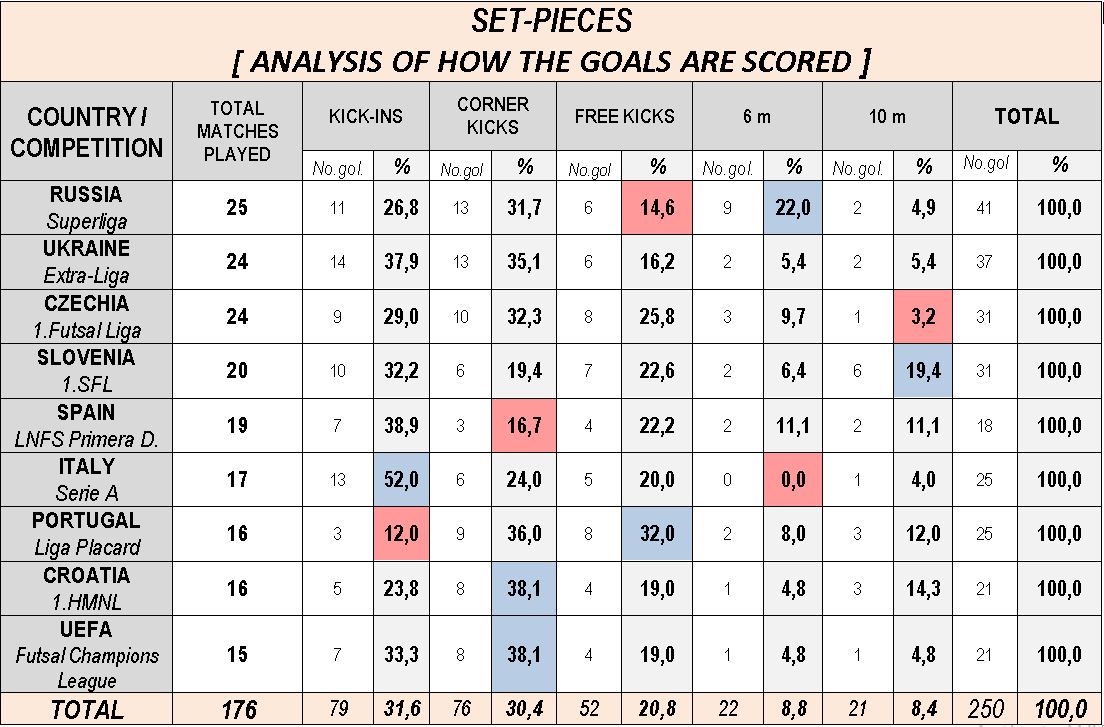
Table 2: Set-pieces analysis
We made a more detailed analysis of set pieces, which is completely deserved because according to this analysis almost ¼ of all goals in futsal is scored from these situations, and segmented it into five possible set-piece categories in a futsal match (corners, kick-ins, free kicks and penalty kicks from 6 and 10 meters). We came to the expected data that goals from kick-ins (31.6%) and corners (30.4%) make a whopping 62% of all goals scored from set-pieces, which is expected domination concerning their frequency compared to the other three categories.
Furthermore, we should take into consideration the fact that all or most of the coaches exert additional efforts on training sessions to train their players with specific plays from kick-ins and corners with which they increase their chances to surprise their opponents in this way and score a goal. This is done because the overall quality and defense discipline are on the rise and because there is a large number of kick-ins and corners that take place during the match.
Regarding kick-ins, we have two leagues with extreme deviations. In Portugal, only 12% of all goals from set-pieces came after kick-ins, while in Italy a whopping 52% of all goals were scored after a kick-in.
(Video: Pesaro scores against Catania after a successful kick-in)
When we talk about corner kicks, in Spanish Primera Division only 16.7% of all goals came after a corner kick, which is almost 15% below the overall average. In this aspect, we should take into consideration the fact that teams train attacking plays from set-pieces as well as they train the defensive aspect of the set-piece situations. This defensive aspect in Spain has been brought on a particularly high level.
(Video: Sporting CP scores against KPRF after a corner-kick)
In third place, in the golden middle, are goals that came after free-kicks (20.8%) which is significantly lower than goals from corners and kick-ins, but on the other hand significantly more than goals from penalty kicks from 6m (8.8%) and 10m (8.4%). Regarding free kicks, Portuguese Liga Placard is the only one that stands out from the rest of the leagues with 32% of all set-piece goals coming from free-kicks, which is almost 12% above the overall average.
Regarding penalty kicks, in the Russian Superliga 9 goals were scored from a 6m penalty kick which makes 22% of all goals from set-pieces. This is an unusually high percentage that can be accidental. In Slovenia, 6 goals were scored after a 10m penalty kick which makes 19.4% of all goals scored from set-pieces. If we take into account that only 20 matches were analyzed in Slovenia, this is a worryingly high result as it turns out that 25% of all matches were decided (or practically decided) from a penalty kick in the closing stage of the half and match, which is not good.
We have to think about referee's criteria in this regard, but except the before-mentioned Slovenia, it is a joyful fact that generally very few goals are scored from penalty kicks from 10m which clearly shows referee's trend of allowing a bit more aggressive play which serves in avoiding a situation where the winner is decided from a 10m penalty kick.
Regarding the plays after the set pieces, a dominant trend is a play with a small or minimal number of passes before the shot (keeping it maximally simple), such as high crosses for a volley shot (corners, kick-ins), using the interspace between defensive lines with fake movements (corners) which are followed by blocks or sharp shots to the second post (kick-ins).
This project proved the importance of set pieces in modern futsal that generate the largest percentage of goals and who often decided the national, European, or world champion. In the era of general tactical advancement of futsal and quality gap reduction, it is increasingly harder to score goals through a regular 4v4 situation, and set pieces are becoming that weight on the scale that often makes the difference between winning or losing.
Power Play 5vs4 Goals Analysis
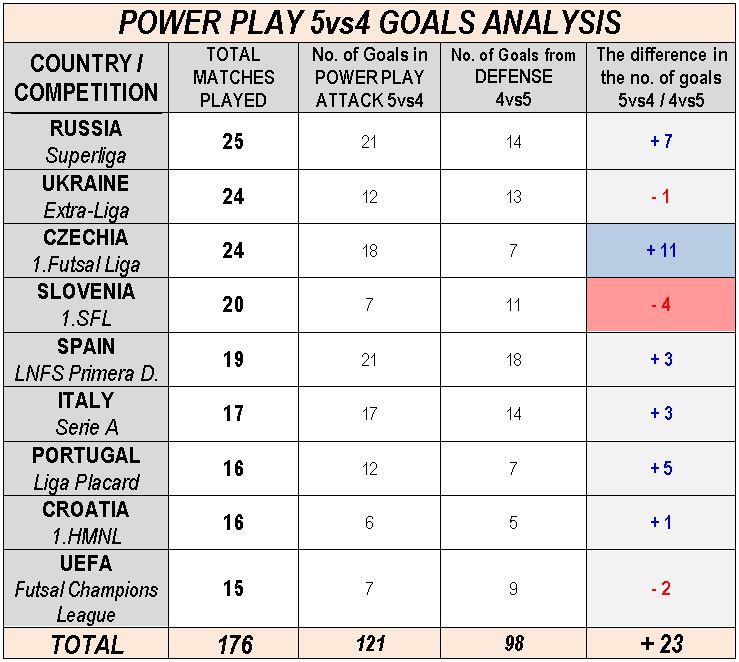
Table 3: Goals scored from a 5v4 powerplay situations
Already in the introductory table, data showed that almost 21% of all goals scored in futsal came in situations with „flying goalkeeper“ (when we add goals from power-play attacks 5v4 and goals from defense 4v5). We also pointed out the trend that this system is used more and more in the attacking phase. More often than not, we don't see any substitutes happening, but the goalkeeper simply takes the ball forward and becomes one of the attackers. This play system is used to get out of high pressing, occasional breaking up of the play, or rhythm change. More and more teams are using „flying goalkeeper“ as one of the key attacking systems.
(Video: Tyumen scores against Sinara with their goalkeeper commencing the power play situation)
This, in turn, points out the fact that futsal goalkeepers in the future will have to be on a high level regarding their technique, agility, shot quality, and generally being able to participate equally in the attacking phase. Of course, there is a lot of debate going on in the futsal community and the coaches themselves about this system with arguments for and against it. But it is a fact that according to the rules of the game, the „flying goalkeeper“ is becoming more and more used as a tool for coaches.
With Table 3. we wanted to additionally analyze goals in these kinds of situations in a way that we compared the number of goals scored from 5v4 attacks with those goals scored from 4v5 defenses. In most of the leagues, with a few exceptions, more goals came after 5v4 attacks compared to those from 4v5 defense. This was confirmed by the total result which states that in 176 analyzed matches 23 more goals were scored from 5v4 attacks than from 4v5 defense. In turn, this shows that this system, no matter how risky it might be, if trained and executed properly is beneficial. Therefore, this analysis could be used as an additional argument that goes into favor of those who advocate this, still controversial, specific futsal play style.
(Video: Kairat scores against Benfica on a 4v5 defense)
Goals Analysis by Match Halves
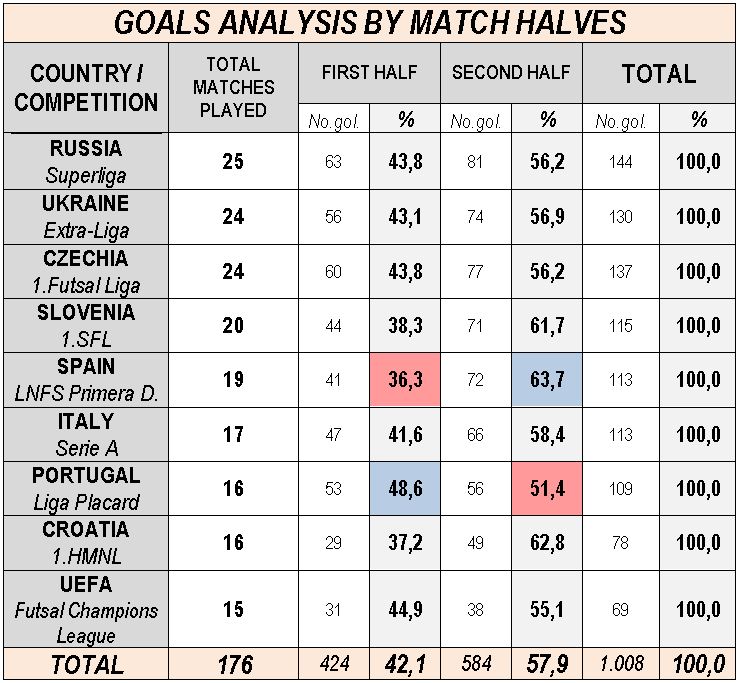
Table 4: Analysis of goals scored regarding match halves
This analysis was certainly the most simple to process. Even futsal laymen will surely say at the first glance that more goals are scored in the second half in comparison to the first half, which our analysis proved. After the analysis of 176 matches, we came to the conclusion in which the first half of the matches saw approximately 42% of all goals, while in the second half we could have seen approximately 58% of the goals. This analysis includes only those goals that were scored in the regular 40 minutes of the match, meaning no extra time goals were taken into consideration, which is why there is a slight difference between Table 4. and Table 1.
Regarding some anomalies, in this analysis, we can highlight the Spanish league as the one with the largest gap concerning goals scored in the second half in comparison to those scored in first (1st: 36% - 2nd: 64%), while on the other hand, in Portugal the goals scored by halves are practically in equal (49% - 51%).

A question has to be raised, why more goals are being scored in the second half? There are plenty of factors that decide this, but certainly, they include reasons such as higher concentration and discipline in defense in the first half of the match while the player's organism is still fresh unlike the closing stage of the match and certainly the higher risk-taking and more energy that teams are ready to invest in the attacking phase at match end to try to catch the resulting deficit which increases their chances to score, as well as chances for a mistake and opponent's goals (from transition, from 4v5 defense).
Analysis of Goals Scored From Zonal Distances

Table 5: Analysis of goals scored regarding zonal distances from opponent's goal
One more interesting analysis from the coach's perspective. We analyzed the goals regarding the zonal distance from the opponent's goal and concluded that in modern futsal most goals are scored under 6m of the opponent's goal (38.8%), then from distances between 6m and 9m from the opponent's goal (32.5%), while fewest (by a slight margin) goals are scored from the zone beyond 9m of the opponent's goal (28.7%).
Although we did not notice any significant divergence compared to the overall average, we still have two leagues (Portugal and Slovenia) where most goals were not scored in the zone under 6m, but from zone 6 to 9 meters from the opponent's goal. Slovenia is particularly interesting because more goals were scored from beyond the 9m zone than from the zone under 6m of the opponent's goal.
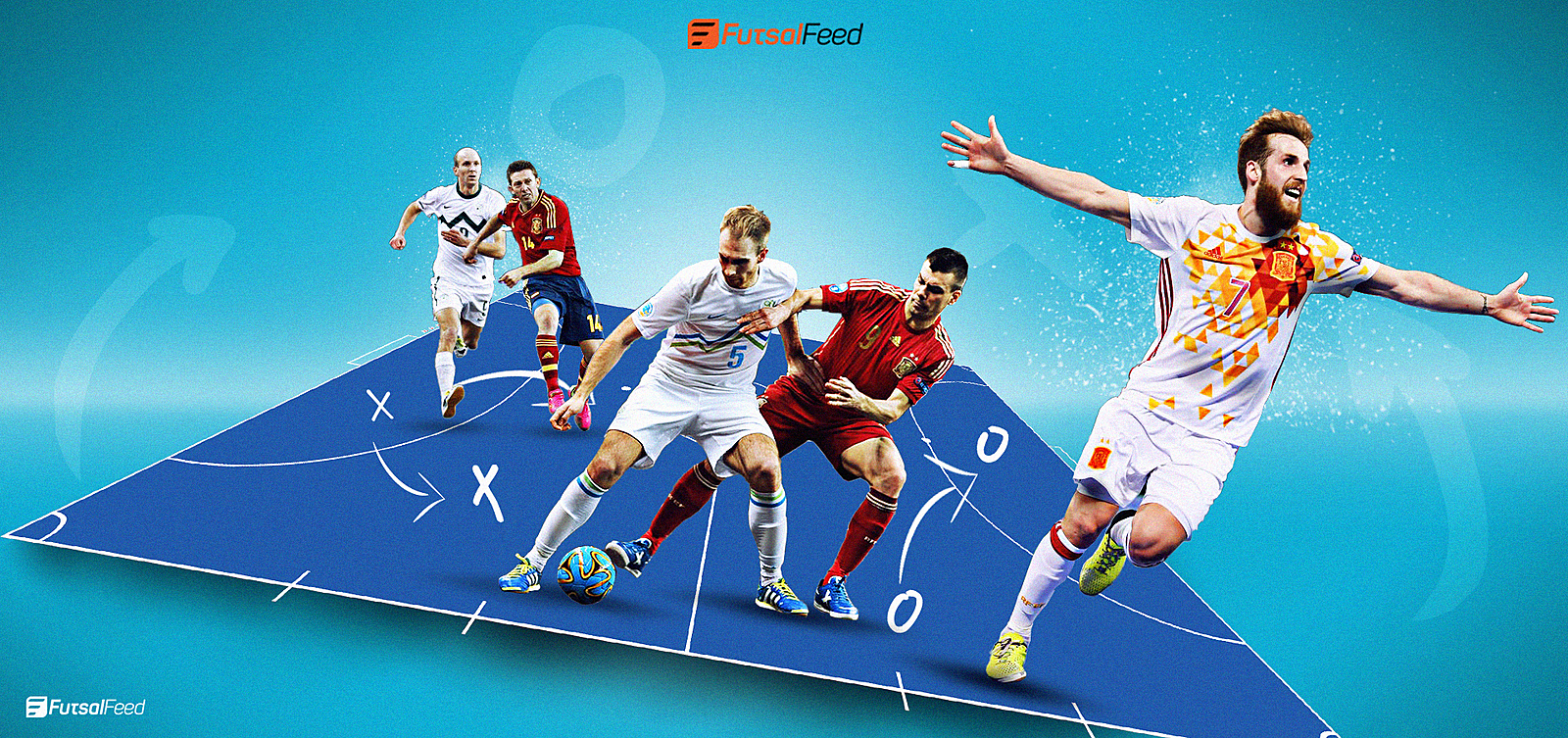
The resulting dispersion of goals regarding the zonal distance from the opponent's goal is quite leveled and the true value of this analysis could be known only if a similar analysis would be done for some past season (e.g. 10 or 20 years ago), because only then we could notice some actual trends.
Looking at modern futsal, it is visible that the number and, especially, the quality of the shots is in constant growth, so it should not be a surprise that almost 1/3 of all goals were scored from the distances larger than 9m from the opponent's goal, which in (further) past was not the case.
Analysis of Average Goals Scored Per Match In Regular Season/Playoff
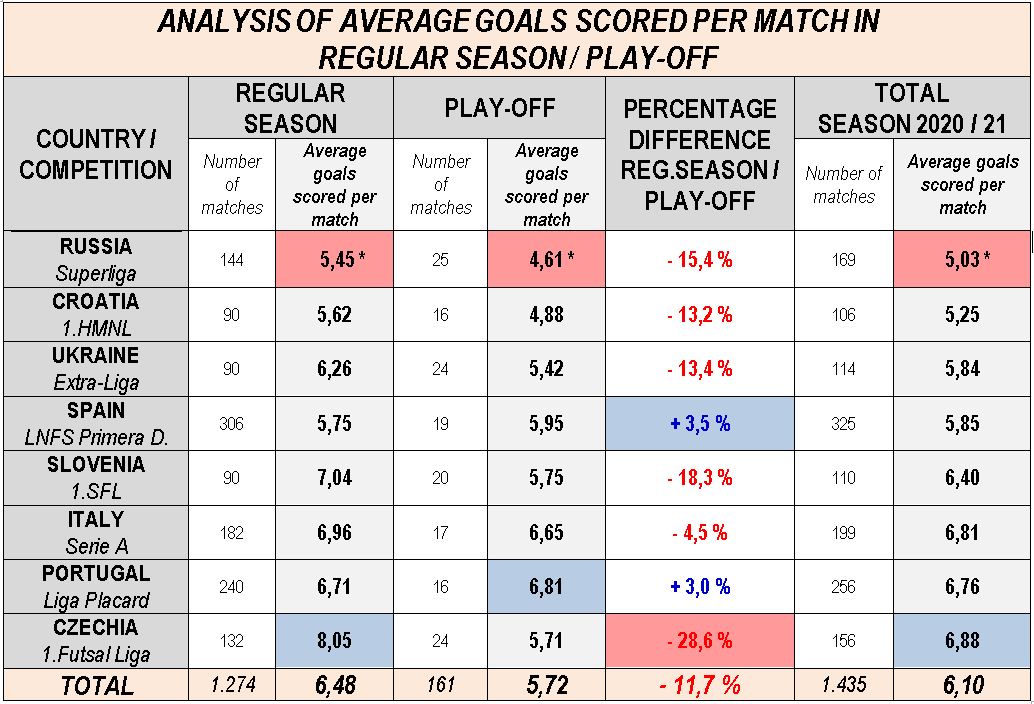
*A correctional factor of 0,8 was used to achieve the average goals scored for 40 minutes of play since matches in Russia last for 50 minutes.
Table 6: Analysis of average goals scored
For the final chapter of this analysis, we decided to make one interesting and important analysis for futsal – one of the average goals scored on futsal matches. Besides total averages per league/country, we also did a comparison of average goals scored in the regular season with those scored in the play-off. We came to some interesting conclusions. It is worth noting that we also analyzed only those goals scored in the regular time (without goals scored in the extra time).
Talking about average goals scored by countries, at the very bottom are Russia (5.03) and Croatia (5.25), which is almost 20% less compared to the next best average scoring league. Ukraine and Spain are next in the line, with almost 6 goals scored per match, while at the very top are Italy, Portugal, and Czechia with an average of almost 7 goals per match. If we take the lowest average of 5.03 goals per match (Russia) and compare it to the highest average of 6.88 goals per match (Czechia), we conclude that in Czech's 1. Futsal Liga 37% more goals are scored than in the Russian Superliga. From all analyzed averages, by far the biggest one is the one of the regular season in Czechia (132 matches), where almost unbelievable 8.05 goals per match were scored!
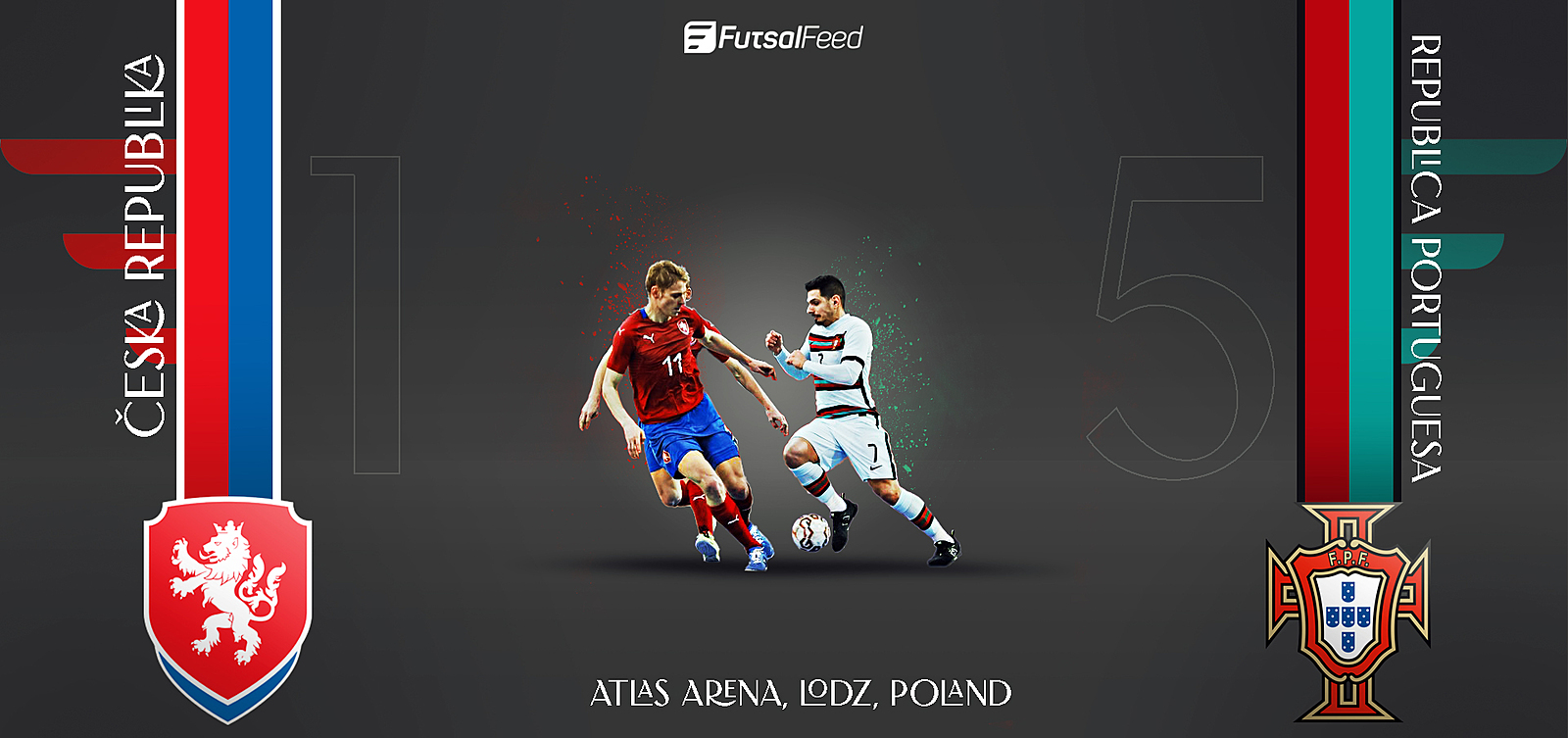
So why are there so many oscillations regarding the average goals scored? One of the simple, but realistic explanations is the one from the beginning of this analysis in which we mentioned that there are certain leagues with a big quality gap between the top 2-3 teams and the rest of the league (Czechia, Portugal, Slovenia), while on the other hand, we have leagues with much more even quality teams (Spain, Russia, Croatia). It is exactly those leagues with the bigger quality gap that are at the top of the average goals scored list and we can see that matches in those leagues often end with double-digit scores which significantly increases the average.
On the other hand, we can also talk about the dominant game philosophies (attacking and defensive orientation) in certain leagues that also affect the final averages. Let us compare Croatian 1.HMNL and their champion MNK Olmissum and Slovenian 1.SFL and their champion Dobovec. Croatia, which was on average of only 5.25 goals per match this season (4.88 in a play-off), experienced a drop in the total quality of the league this season. But it is also evident that a defensive futsal philosophy is dominant which is best shown in the example of the champion Olmissum. Although Olmissum is significantly better than (almost) all other teams in the league, Olmissum scored only 92 goals in 25 matches which is an average of 3.68 goals per match. On the other side, Slovenian 1.SFL, which is on a total average of 6.40 goals per match (if looking only at the regular season, the average is 7.04), or 22% more than Croatia, has a bigger quality gap among its teams which contributed to the higher average. But it is also evident that an attacking futsal philosophy is dominant which is best shown on the example of Slovenian champion Dobovec, a participant in the FUCL Final Eight tournament, who is equally dominant in Slovenia, as Olmissum is in Croatia, and who have scored a whopping 191 goals in 27 matches which is an average of 7.07 goals per match. Or in other words – 91% more than the Croatian champion.
The third factor that affects the total average of goals scored is surely the level of tactical maturity of teams whose growth brings better and more disciplined defensive phase, which makes it harder for attackers to score. Logically, that level is highest in the best leagues such as Spain or Russia, so this could also be one reason why in Russia we can see fewer goals on average. Talking about Russia, it is worth noting that they are the only ones whose matches last for 50 minutes (2x25) which significantly changes the approach towards the match, as well as the play style and way of thinking/behavior during the match (e.g. energy consumption dosing), so all data gathered about Russian Superliga should be taken with minimal reserve.
The second part of the average goals scored analysis refers to average goals scored in the regular part of the season compared to those scored in the play-offs. Expectedly, almost every league saw a drop in the average goals scored in the playoffs (except Spain and Portugal who had a minor growth). The highest drop in average goals scored we had in Czechia wherein the play-offs (5.71) there was a 28.6% drop in average goals scored per match than in the regular season (8.05). When we consider all leagues, meaning their total average goals scored, we can see that in the play-offs (5.72) there is an 11.7% drop compared to the average goals scored in the regular season (6.48).
This data is completely expected and already seen in plenty of other sports because, on one hand, only the best 8 teams are participating in the playoffs, while, on the other hand, all teams and individuals give their absolute maximums while fighting for the championship.

Conclusion
In this conclusion we will once again repeat the few general trends of modern futsal that are easily visible after processing all of the gathered data:
- Set pieces are at the top regarding the percentage of total goals scored.
- Goalkeepers are becoming an equal „fifth“ player in the court, and situations with a „flying goalkeeper“are one of the main attacking systems.
- Corners and kick-ins generate almost 2/3 of all goals scored from set-pieces.
- More goals are being scored in the second half than in the first half.
- Most goals are scored within the 6 meters of the opponent's goal.
- The total average of goals per match is around 6, while the fewest goals are scored in Russia and most in Czechia.
- The trend of referee criteria is generally such that it allows a more aggressive play which lowers the number of accumulated fouls in matches.
- Futsal is becoming a faster and more demanding sport, not only in the physical aspect but also in the tactical-technical sense.
- The quality gap among these leagues, and even in these leagues, is generally in a slight drop, but it is still quite big which is mostly generated by financial capabilities of the clubs that diverge significantly when we compare top clubs from Spain, Russia, and Portugal with the rest of Europe.
In total, 176 matches were analyzed for this project, which without any doubt makes a representative sample. Conclusions and data from this analysis can be used, not only as correct, but also relevant for all futsal coaches around Europe, but also the entire futsal community.
This project/analysis can easily be called the cornerstone and comparison basis for all future projects and analysis of the same or similar topic.














